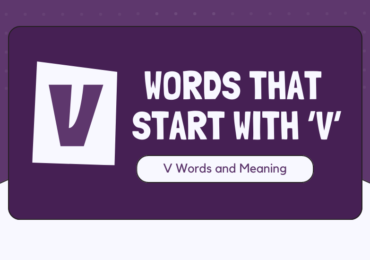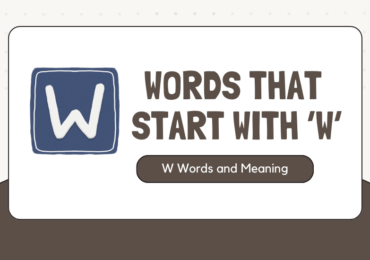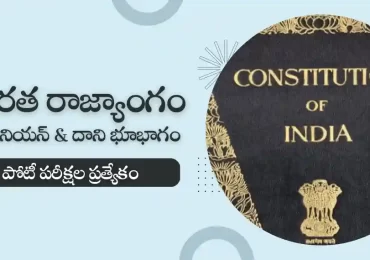ముఖ్యమైన ఆంగ్ల ఉచ్చారణ నియమాలు తెలుసుకోండి. ఇంగ్లీషు గ్లోబల్ లాంగ్వేజ్ అయ్యింది కాబట్టి సరిపోయింది. లేకుంటే దీని దరిదాపులకు ఎవరూ పోయి ఉండేవారు కాదు. ఈ భాష నేర్చుకోవడంలో ఉండే నియమ నిభందనలు, వాటిని నేర్చుకోవడంలో ఉండే తల తిప్పలు, ఇంకే భాషలోనూ ఉండవు.
ఇంగ్లీష్ పద నిర్మాణంలో (స్పెల్లింగ్)నే కాదూ, వాటిని పలికే విషయంలో కూడా సవాలక్ష అడ్డంకులు ఉన్నాయి. అందుకే ఈ భాష గ్రామర్ పుస్తకాలు చదివి నేర్చుకునే వారికంటే, మందిలో ఉండి నేర్చుకునే వారికే త్వరగా ఒంటపడుతుంది.
ఇంగ్లీష్ పదాలను ఎలా పలకాలో నేర్చుకునే ముందు ఇప్పటికే మనం నేర్చుకున్న ఆల్ఫాబెట్ మరియు సిలబుల్ కోసం మరో సారి గుర్తుచేసుకుందాం. ఇంగ్లీష్ భాషలో మొత్తం 26 అక్షరాలు ఉన్నాయి. ఇవీటిని అవి పలికే శబ్దాలు ఆధారంగా తిరిగి రెండు గ్రూపులుగా విభజించారు. A, E, I, O, U అక్షరాలను Vowels (అచ్చులు) అని, మిగతా అక్షరాలను Consonants (హల్లులు) అని అంటారు.
ప్రతి భాషలానే ఇంగ్లీషులో కూడా ఒకటి లేదా అంతకంటే ఎక్కువ అక్షరాలు కలిసి పదాలను ఏర్పరుస్తాయి. ఈ పదాల కలయిక ద్వారా మాటలు లేదా సంభాషణలు ఏర్పడతయి. ఇంతవరకు బానే ఉంది.
అసలు చిక్కుంతా ఇక్కడే ఉంది. ఇంగ్లీషులో అక్షరాల కలయిక వలనే పదాలు ఏర్పడినట్లున్నా, వాటి పలికే సందర్భంలో ఈ పదాల సముదాయాన్ని సిలబుల్స్ (స్పీచ్ యూనిట్స్) గా పరిగణించాల్సి ఉంటుంది. ఇంగీష్ భాషకు, మాట్లాడే ఇంగ్లీష్ భాషకు ప్రధాన అవరోధం ఇక్కడే ఉంది.
సిలబుల్ నియమం
సిలబుల్ అంటే ఒక స్పీచ్ యూనిట్ అని అర్ధం. అనగా ఒక పదంలో విడివిగా పలకగలిగే అక్షరాల గ్రూపు అని అర్ధం. ఇంగ్లీషు పదాలను ఈ స్పీచ్ యూనిట్స్ ఆధారంగాన్నే పలకాల్సి ఉంటుంది. ప్రతీ సిలబుల్లో తప్పనిసరి ఒక అచ్చు (vowel) అక్షరం ఉంటుంది. ఒక పదంలో ఎన్ని సిలబుల్స్ ఉంటె, ఆ పదంలో అన్ని vowls ఉంటాయి.
| Word | Syllables | Syllables Count |
|---|---|---|
| Lake | lake | Lake has one syllable (1) |
| Paper | pa-per | Paper has two syllables (2) |
| Energy | en-er-gy | Energy has three syllables (3) |
| Calculator | cal-cu-la-tor | Calculator has four syllables (4) |
| Communication | comm-u-ni-ca-tion | Communication has five syllables (5) |
| Responsibility | res-pon-si-bi-li-ty | Responsibility has six syllables (6) |
పైన ఉదాహరణలు మీరు నిశితంగా గమనించి ఉంటె, మొదటి పదం Lake లో "a & e" రూపంలో రెండు vowels ఉన్నాయి. కానీ మన నియమం ప్రకారం ఒక సిలబుల్లో ఒక vowel మాత్రమే ఉండాలి. ఇప్పుడు మీరు lake పదాన్ని పలికి చుస్తే, అందులో "a" మాత్రమే vowel శబ్దాన్ని ఇస్తుంది, చివరన ఉన్న e - క్ (హల్లు) శబ్దాన్ని ఇస్తుంది.
అలానే Responsibility, Energy పదాలలో "y" అక్షరం vowel కానప్పటికీ, పలికేటప్పుడు vowel శబ్దాన్ని ఇస్తున్నాయి. కావున అక్కడ y అక్షరాన్ని vowel గానే పరిగణించాలి. ఈ తతంగమంతా మీకు అర్ధమైతే, ఇప్పుడు మీరు ఏ ఆంగ్ల పదాన్ని అయినా సులభంగా ఉచ్ఛరించగలరు. ఒక పదంలో ఎన్ని vowel శబ్దాలు ఉంటె ఆ పధంలో అన్ని సిలబుల్స్ ఉన్నట్లు. ఈ విడివిడి సిలబల్స్ కలిపి పలికితే ఆ పదం యొక్క ఉచ్చారణ (punctuation) వస్తుంది.
ఇంకా మీకు సందేహం ఉంటె ఆల్ఫాబెట్ ఆర్టికల్ యందు దీనికి సంబంధించి పూర్తి వివరణ ఉంటుంది. దాన్ని మరోమారు పునఃపరిశీలించండి. అలానే అక్కడే ఆల్ఫాబెట్ లోని ప్రతీ అక్షరాన్ని ఏవిధంగా పలకాలో మరోమారు అభ్యసన చేయండి.
ఇంగ్లీష్ రాయడంలో లేదా పలకడంలో ఉండే ప్రధాన అడ్డంకులలో అక్షరాల ఉచ్చారణ పాత్ర కూడా ఉంది. మన తెలుగు రాష్ట్రాలలో జిల్లాకో యాస ఉన్నట్లు, ఇంగ్లీషులో కూడా ఒక్కో అక్షరానికి ఒకటికి మించిన శబ్దాలున్నాయి.
అచ్చు అక్షరాల (Vowels) ఉచ్చారణ
ఇంగ్లీషు అచ్చులు (Vowels), విడిగా ఉన్నప్పుడు ఇచ్చే శబ్దాలకు, హల్లులతో కలిసి ఉన్నప్పుడు ఇచ్చే శబ్దాలకు తేడా ఉంటుంది. A, E, I, O, U లు విడిగా ఉన్నప్పుడు వరుసగా "ఎ, ఇ, ఐ, ఒ యు" శబ్దాలనే పలుకుతాయి. కానీ అవి హల్లులతో కలిసే సందర్భంలో వివిధ ఇంగ్లీష్ వ్యాకరణ నియమాలనుసారం ప్రవర్తిస్తాయి. వాటి గురించి చూద్దాం.
ఒక సిలబుల్ ఉండే పదాలలో vowel అక్షరం పదం మధ్యలో ఉంటే, ఆ చిన్నగా పలుకుతుంది (short sound). Ex : cat, dog, man, hat, mom, dad, got. కానీ ఈ పదాలలో vowel అక్షరం తర్వాత F, L, S అక్షరాలు వచ్చినట్లయితే ఆ శబ్దం రెట్టింపు అవుతుంది (Long Sound). Ex : staff, ball, pass
ఒక పదంలో పక్కపక్కన రెండు vowel అక్షరాలు ఉన్న సందర్భాలలో మొదటి vowel అక్షరం లాంగ్ సౌండ్ ఇస్తుంది. రెండవ vowel అక్షరం సైలెంట్ అవుతుంది. Ex : meat, seat, plain, rain, goat, road, lie, pie
E చివరి అక్షరంగా ఉంటూ, మరో vowel అక్షరాన్ని కలిగి ఉండే పదాలలో, E అక్షరం సైలెంట్ అవుతుంది. మరో vowel దీర్ఘంగా పలుకుతుంది. Ex : place, cake, mice, vote, mute.
Y చివరి అక్షరంగా ఉండే రెండు లేదా మూడు అక్షరాల పదాలలో, Y అక్షరం లాంగ్ సౌండుతో "i (ఐ)" శబ్దాన్ని ఇస్తుంది. Ex : cry, try, my, fly, by. అదే మూడు అక్షరాలకు మించి ఉండే పదాలలో లాంగ్ "E (ఇ)" శబ్దాన్ని ఇస్తుంది. Ex : money, honey, many, key, funny.
IE కాంబినేషన్ పదాలలో "E" అక్షరం దీర్ఘ శబ్దాన్ని ఇస్తుంది. Ex : relieve, relief, reprieve. అదే EI కాంబినేషన్ పదాలలో "I (ఐ)" అక్షరం దీర్ఘ శబ్దాన్ని ఇస్తుంది. Ex : weight.
ఓయ్ అనే శబ్దం పదం మధ్యలో వచ్చేటప్పుడు అది స్పెల్లింగులో "OI" గా ఉంటుంది, అదే శబ్దం పదం చివరన ఉన్నప్పుడూ అది "OY" గా మారుతుంది. Ex : boil, soil, toil, boy, toy.
| అచ్చు అక్షరం | విడిగా ఇచ్చే శబ్దం | హల్లుతో కలిసేటప్పుడు ఇచ్చే శబ్దం | ఉదాహరణ |
|---|---|---|---|
| a | ఎ | అ / ఆ | ka = క / కా |
| e | ఇ | ఎ / ఏ | ke = కె / కే |
| i | ఐ | ఇ / ఈ | ki = కి / కీ |
| o | ఒ | ఒ / ఓ | ko = కొ / కో |
| u | యు | ఉ / ఊ | ku = కు / కూ |
ఇంగ్లీష్ ఉచ్ఛరణలో మరికొన్ని నియమాలు
ఇంగ్లీష్ ఉచ్ఛరణలో ఇంకో పెద్ద తలనొప్పి వ్యవహారం "సైలెంట్ లెటర్స్". ఆంగ్ల భాషలో కొన్ని పదాల్లోని కొన్ని అక్షరాలు అసలు పలకకుండా సైలెంట్ అయిపోతాయి. స్పెల్లింగ్ రాసేటపుడు వీటిని రాయాల్సి వచ్చినా, ఉచ్ఛరించే సందర్భంలో వీటికి మినహాయింపు ఇవ్వాల్సి ఉంటుంది.
దాదాపు 60% ఇంగ్లీష్ పదాలు ఈ సైలెంట్ లెటర్స్ కలిగివున్నాయి. ఈ భాష నేర్చుకునే వారికీ ఇది నిజంగానే పెద్ద తలనొప్పి వ్యవహారం. వీటిని గురించి మీరు ఎన్ని పుస్తకాలూ చదివినా తలకెక్కే అవకాశం లేదు, ఇంగ్లీష్ సినిమాలు చూడటం ద్వారా లేదా చక్కని ఇంగ్లీష్ మాట్లాడే వారి ద్వారా మాత్రమే ఈ నియమం మరియు ఆ అక్షరాలు ఒంటపడతాయి. వాటి సంగతేంటో ఇప్పుడు చూద్దాం.
Silent letter B
- mb తో ముగిచే పదాలలో "B" అక్షరం ఎప్పుడూ సైలెంటులో ఉంటుంది. Ex : Climb, dumb, tomb, limb, bomb, thumb. అలానే చివరిలో "-bt" root word కలిగి ఉండే పదాలలో "B" అక్షరం దాదాపు సైలెంటులో ఉంటుంది Ex : Subtle, doubt, debt
Silent letter C
SC కాంబినేషన్ పదాలలో C దాదాపు ఎప్పుడూ సైలెంటులో ఉంటుంది. అలానే K & Q పక్కన ఉన్నప్పుడు C తన గుర్తింపును కోల్పోతుంది. Ex : Muscle, scissors, ascent, miscellaneous & Acquaintance, acknowledge, acquiesce, acquit
Silent letter D
DG కాంబినేషన్ పదాలలో D దాదాపు ఎప్పుడూ సైలెంటులో ఉంటుంది. Ex : Grudge, hedge, pledge, dodge. అలానే Sandwich,handkerchief, handsome, Wednesday వంటి పదాలలో కూడా D అక్షరం సైలెంటుగా ఉంటుంది.
Silent letter E
E అక్షరంతో ముగిచే పదాలలో E అక్షరం సైలెంటుగా ఉంటుంది. Ex : Site, hide, grave, drive, bite
Silent letter G
GN కాంబినేషన్ పదాలలో G దాదాపు ఎప్పుడూ సైలెంటులో ఉంటుంది. Ex : Design, align,champagne, foreign, sign etc. అలానే Cognitive, signature, magnet, igneous వంటి పదాలలో ఈ నియమం పనిచేయదు.
Silent letter GH
vowel అక్షరంతో తర్వాత వచ్చే GH కాంబినేషన్ అక్షరాలు ఉచ్చరింపబడవు. కానీ Doghouse, foghorn, bighead వంటి కాంపౌండ్ వర్డ్స్ విషయంలో ఈ నియమం వర్తించదు. అలానే GH కాంబినేషన్ కొన్ని పదాలలో "F" శబ్దాన్ని ఇస్తుంది. Ex : Dough, rough, cough
Silent letter H
WH కాంబినేషన్ పదాలలో H ఎప్పుడూ సైలెంటుగా ఉంటుంది. Ex : అలానే CH, GH, RH కంబినేషన్ పదాలలో H ఎక్కువ శాతం పదాలలో సైలెంటుగా ఉంటుంది. Ex : Choir, chorus, rhythm, echo. అలానే H తొ ప్రారంభమయ్యే కొన్ని పదాలలో H అక్షరం ఉచ్చరింపబడదు. Ex : Hour, honest, heir
Silent letter K
KN కాంబినేషన్ అక్షరాలతో ప్రారంభమయ్యే పదాలలో K అక్షరం సైలెంటుగా ఉంటుంది. Ex : knee, know, knock
Silent letter L
Al, Ol, Ul కాంబినేషన్ అక్షరాలలో L అక్షరం కొన్ని పదాలలో సైలెంటుగా ఉంటుంది. Ex : calm, would, salmon. కానీ halo, bulk, sulk, hold, sold, fold మరియు mould వంటి పదాలలో ఈ నియమం వర్తించదు.
Silent letter M
Mn కాంబినేషన్ తో ప్రారంభమయ్యే పదాలలో 'M' అక్షరం సైలెంటుగా ఉంటుంది. Ex : mneme, mnemic, mnemonic
Silent letter N
MN తో ముగిచే పదాలలో "N' అక్షరం కొన్ని పదాలలో సైలెంటుగా ఉంటుంది. Ex : solemn, hymn, autumn. కానీ chimney, alumni, circumnavigate, dimness, gymnastics, randomness వంటి పదాలలో ఈ నియమం వర్తించదు.
Silent letter P
Ps, Pt, Pn కాంబినేషన్ లో ప్రారంభమయ్యే పదాలలో "P" అక్షరం ఎల్లపుడూ సైలెంటుగా ఉంటుంది. Ex : pseudonym, pneumonia, psychologist
Silent letter PH
PH కాంబినేషన్ కొన్నిసార్లు "F" శబ్దాన్ని ఇస్తుంది. Ex : telephone, alphabet
Silent letter S
IS కాంబినేషన్ పదాలలో కొన్నింటిలో "S" అక్షరం సైలెంటుగా ఉంటుంది.
Silent letter T
apostle, thistle, whistle, wrestle, thistle Christmasవంటి చాల పదాలలో T అక్షరం ఉచ్చరింపబడదు.
Silent letter U
GU కాంబినేషన్ మరియు మరో Vowel అక్షరానికి ముందే వచ్చే పదాలలో U అక్షరం సైలెంటుగా ఉంటుంది. Ex : guess, guitar, league, guide, guest, guilty.
Silent letter W
WR కాంబినేషన్ తో ప్రారంభమయ్యే పదాలలో W అక్షరం సైలెంటుగా ఉంటుంది. Ex : write, wrong, wrist. అలానే who, whose, whom, whole, whoever, answer, two, sword వంటి పదాలలో కూడా W అక్షరం ఉచ్చరింపబడదు.
ఇంగ్లీషు ఉచ్ఛరణలో విరామ చిహ్నాల ఉపయోగం
| విరామ చిహ్నాలు | ఉపయోగం |
Comma ( , ) |
A punctuation mark (,) indicating a pause between parts of a sentence or separating items in a list |
Quotation Mark ( " ) |
We use quotation marks with direct quotes, with titles of certain works, to imply alternate meanings, and to write words as words. |
Hyphen ( - ) |
The hyphen ‐ is a punctuation mark used to join words and to separate syllables of a single word. The use of hyphens is called hyphenation. Son-in-law is an example of a hyphenated word |
Colon ( : ) |
The colon: is a punctuation mark consisting of two equally sized dots placed one above the other on the same vertical line. A colon often precedes an explanation, a list, a quotation, or a block quotation |
Dashes ( ___ ) |
Dashes—often confused with hyphens—connect groups of words to other groups of words to emphasize a point. Usually, the dash separates words in the middle or at the end of a sentence. |
Semicolon ( ; ) |
The semicolon or semi-colon ; is a symbol commonly used as orthographic punctuation. In the English language, a semicolon is most commonly used to link (in a single sentence) two independent clauses that are closely related in thought |
Question mark ( ? ) |
The question mark? is a punctuation mark that indicates an interrogative clause or phrase in many languages. The question mark is not used for indirect questions. |
Full stop ( . ) |
used at the end of a sentence or an abbreviation. used to suggest that there is nothing more to say on a topic. |
Exclamation mark ( ! ) |
usually used after an interjection or exclamation to indicate strong feelings or high volume, or to show emphasis. |
Bracket ( ) [ ] { } ⟨ ⟩ |
Each of a pair of marks ( ) [ ] { } ⟨ ⟩ used to enclose words or figures so as to separate them from the context. |
Apostrophe ( ' )(అపోస్ట్రోఫీ) |
when a character in a literary work speaks to an object, an idea, or someone who doesn't exist as if it is a living person. This is done to produce dramatic effect and to show the importance of the object or idea |
Slash ( / ) |
A slash can show a line break in a poem, song, or play, usually if several short lines are being written together on one long line |










I want complete text
I want to go through the content
Excellent! I would like to follow it